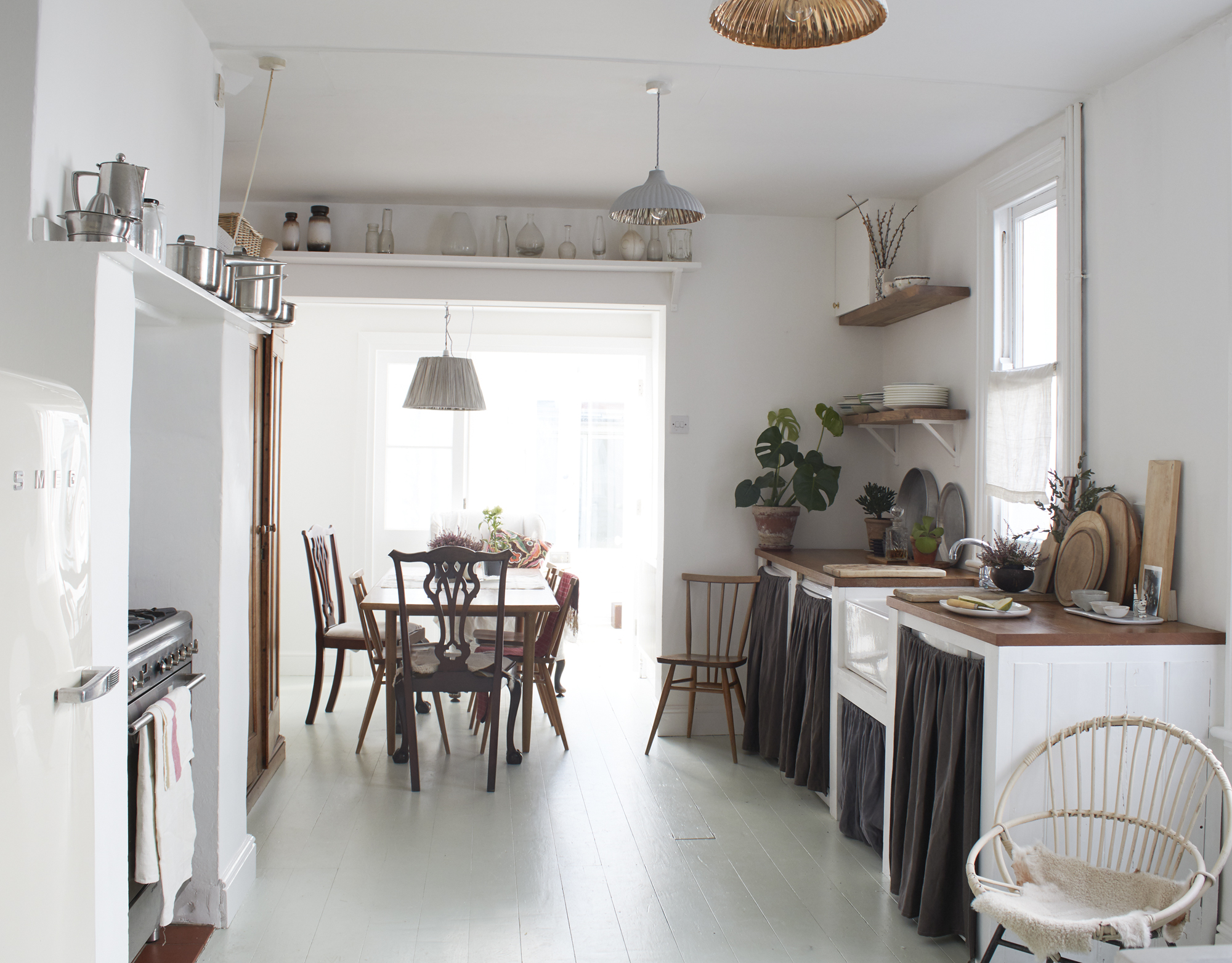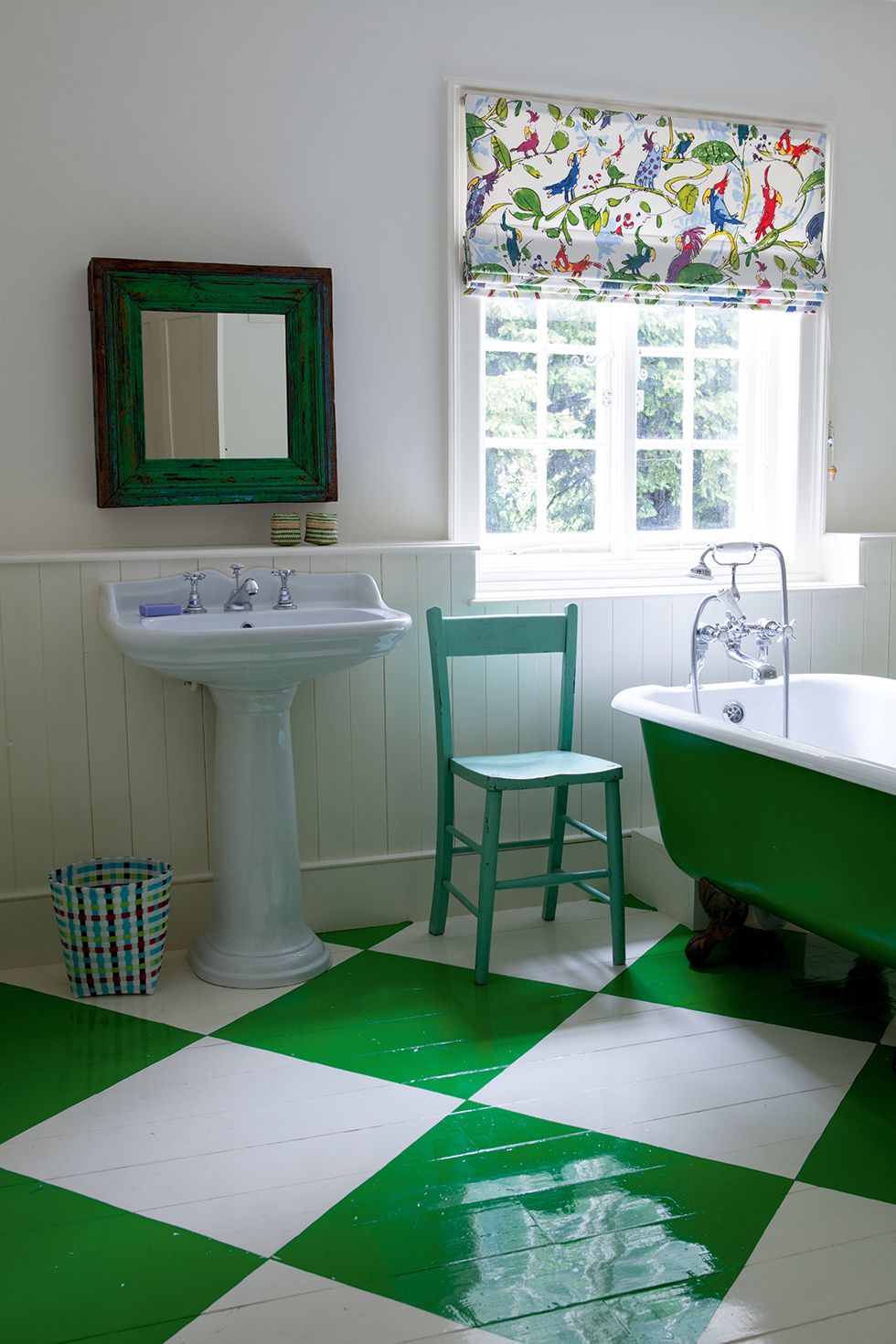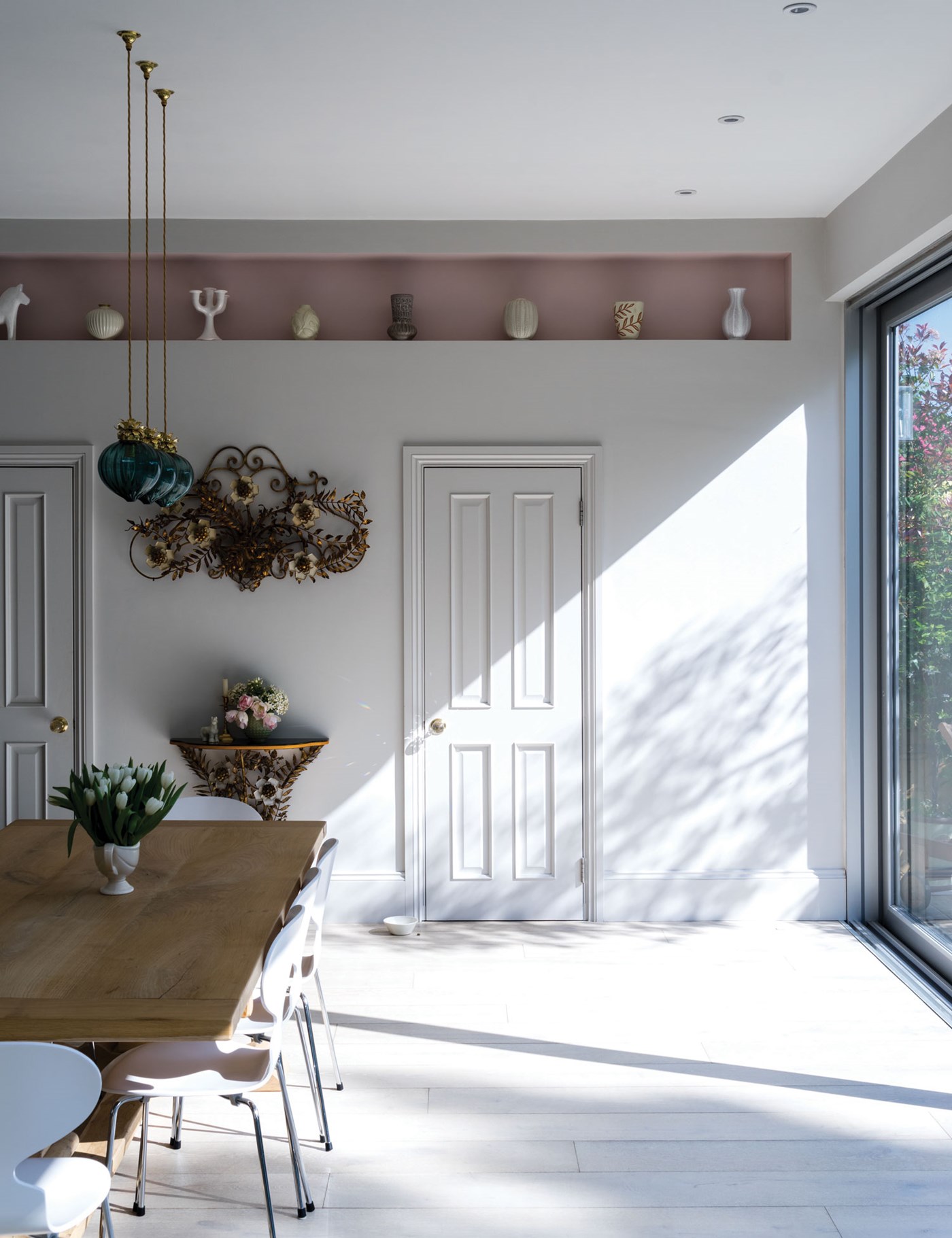Painted floorboards: an easy guide to getting that rustic look
You can make a big impact by simply painting floorboards – for just the cost of a little preparation and a pot or two of paint


Painting floorboards is a great way to update a room on a budget – especially if you have the time to tackle the job as a DIY project. Ideally, you should use floor paints for a long-lasting finish, but most good quality paints suitable for woodwork will give you a surprisingly tough floor. How long will the job take? Preparation is key, so be ready to spend time getting this stage right; the painting itself is relatively fast, but you will be held up by drying times. Use this guide to find out how to paint floorboards – and scroll down for loads of painted floorboard inspiration too.
Find out more about what you can do with flooring and paint in your rooms. Discover tips and inspiration for painting stairs, too.
You will need:
- Hand sander
- Mop and bucket
- Detergent and warm water
- Wood filler
- Filler knife
- Primer
- Paint
- Clear wood varnish
- Paint roller
- Paintbrush
Step one: Prepare your floorboards for painting
Start by repairing any loose or broken floorboards, filling dents and scratches as you go. If the floors have already been painted many times, you may want to strip them back first for a very neat finish. Use paint stripper (see our guide to find the best), a heat gun or sanding – but take care as old paint may be lead-based, so you'll need a mask. Use our guide to repairing floorboards for more tips.
Floor draughty? Use our guide to fixing draughty floorboards to make sure your room feels toasty as well as looking smart.
For painting bare floorboards, first use a 150-grit sandpaper, then wash the floors to remove dust and dirt. Allow the floor to dry overnight. Use our guide to sanding floorboards to ensure you tackle the job correctly.

Step two: apply the primer or first coat
You are now ready to paint the floorboards. Start by applying a primer (if needed – check the manufacturer's instructions), then allow to dry overnight.
As mentioned above, any wood paint (check out our buying guide for the best you can buy) will do the job, but those designed for floors are more durable and less slippery – if more limited in colour choices. Whichever you choose, pick a satin finish over a gloss or matt finish – it will give you the right balance between good looks and durability.
Get small space home decor ideas, celeb inspiration, DIY tips and more, straight to your inbox!
Step three: lightly sand the floor (again)
Lightly sand the first coat of paint with a 220-grit sandpaper, then wipe the floor over with a damp cloth.

Step four: apply the next coat of paint
Apply a thin coat of paint to the floorboards with a roller or natural bristle paint brush. The brush will create a smoother finish; the roller a more stippled look. Allow to dry thoroughly before applying two more thin coats, with drying time between the two.
A photo posted by @greenandmustard on Jul 23, 2018 at 11:55pm PDT
How to choose the best floor paint colour
Which colour to choose? Treat your pick of floor paint colour just as you would when choosing any other flooring, bearing these design considerations in mind:
- Light colours reflect more light and will make a room feel larger.
- Dark colours will make a room feel more formal but cosier.
- A distressed finish, achieved by sanding back the top coat, will give your room a laid-back look that's perfect for a rustic feel.
- A limed finish, achieved with a special limewash and, typically, a top coat of yacht varnish, will give you a Scandi appeal that suits both contemporary and traditional homes.

Hallway floor painted in Farrow & Ball Lulworth Blue
5 painted floorboard ideas to inspire you design
So now you know how to paint your floorboards, let our ideas inspire exactly what look you are going to go for...
1. Create a statement diamond pattern

If you want your floor to add more interest to your room you can quite easily create a classic checkered effect. You can do this over bare, sealed floorboards to create the look above or you could do two colours like the one below.
Either way, start by mapping out your grid. We have seen it done with masking tape, but honestly, there looks to be a lot of maths involved with getting all the squares the same shape and at the right angle. So we thought the easiest way to create the effect would be to make the pattern using cheap square self-adhesive vinyl tiles. Just stick them to the floor in a checkered pattern and then paint all the sections of the floor that aren't covered in vinyl, then leave to dry. Apply a second coat.
Once the second coat is totally dry, peel up the vinyl squares to reveal the bare floorboards below.

2. Contrast a white kitchen with dark floorboards

Love black kitchens but not quite ready to go full on with it? Well painted floorboards are a great way to bring those darker colours into your space. Try bringing that floor colour into the room elsewhere too, like you can see here with the wallpaper.
3. Go for a bang on trend white floor

White floorboards are a thing of dreams, and we see them all over Instagram. Maybe you are put off because they are unpractical, but let us tell you, we have dabbled with white floorboards and while we wouldn't recommend for a hallway, they work really well in areas that get less traffic like bedrooms. Pick a paint that's waterproof and your should be fine (we dropped a mag of coffee on our white floors and we actually just painted over the damage).
4. Be bold in a kids room

What child would not love a bright pink floor? And painted floorboards are actually a really practical choice for kid's bedrooms because you can vacuum them, mop them and, as we mentioned, even paint over them if you need too.
5. White wash your floorboards

If you have been blessed with beautiful wooden floorboards that would be a same to cover, try whitewashing them instead. Simple mix water and a good white paint – the amount you use of each is up to you, for less coverage use less paint to water, test it out first to check you have the desired effect – and paint your boards.

Lucy is Global Editor-in-Chief of Homes & Gardens having worked on numerous interiors and property titles. She was founding Editor of Channel 4’s 4Homes magazine, was Associate Editor at Ideal Home, before becoming Editor-in-Chief of Realhomes.com in 2018 then moving to Homes & Gardens in 2021. She has also written for Huffington Post, AOL, UKTV, MSN, House Beautiful, Good Homes, and many women’s titles. Find her writing about everything from buying and selling property, self build, DIY, design and consumer issues to gardening.